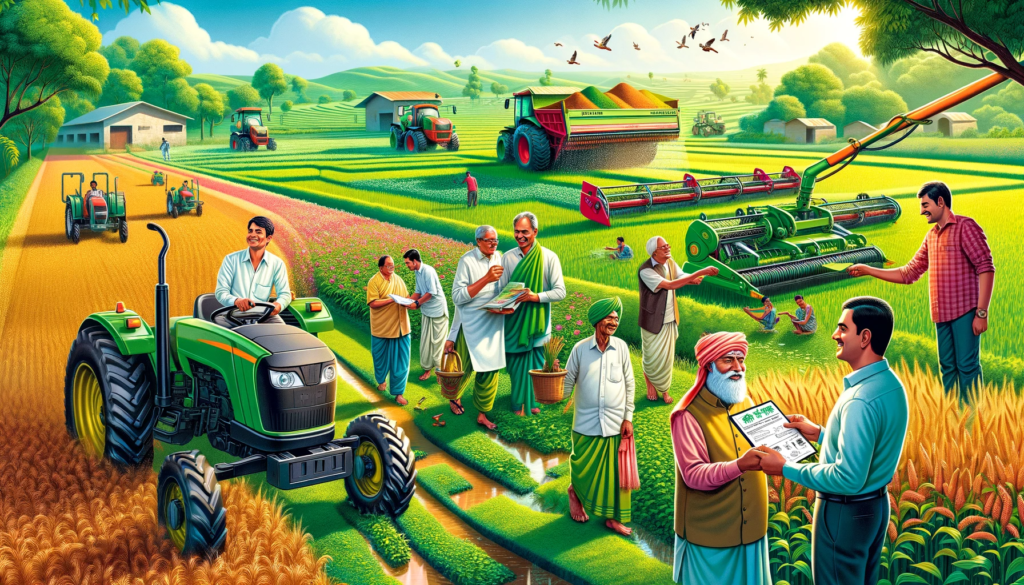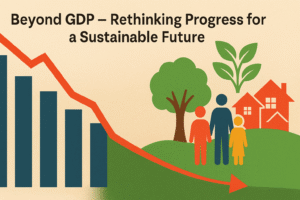Agriculture in India is not just a mere sector of the economy; it’s a cornerstone of India’s socio-cultural fabric. Encompassing over half of the country’s population, agriculture is more than a livelihood—it’s a way of life. Historically, this sector has shaped the economic, social, and cultural patterns of the Indian subcontinent. However, despite its vastness and importance, the agricultural sector in India faces numerous challenges. From the small landholdings that fragment efficiency to the vagaries of the monsoon that still dictate the fate of many, Indian agriculture’s potential has been hobbled by various structural, technological, and policy constraints.
In recent decades, the burgeoning population and the consequent rise in food demand have further underscored the need for an agricultural overhaul. The demands of modern times and the global market have rendered traditional practices increasingly insufficient. The sector’s vulnerability to climate change, its reliance on monsoon rains, and farmers’ struggles with fluctuating market prices and rising debts have created a milieu where reforms are not just desired but are critically necessary. In response, the Indian government has introduced a series of agricultural reforms aimed at revitalizing this age-old practice. These reforms represent a confluence of traditional wisdom and modern technology, aiming to usher in a new era of prosperity and sustainability in Indian agriculture.

Recent Agricultural Reforms in India:
- Pradhan Mantri Krishi Sinchai Yojana (PMKSY): The PMKSY is a pivotal step towards ensuring water security for every farm (Har Khet Ko Pani) and maximizing water use efficiency (Per Drop More Crop). This scheme focuses on expanding irrigation coverage and promoting water-saving techniques like drip and sprinkler irrigation.
- Soil Health Card Scheme: A revolutionary initiative, this scheme provides farmers with soil health cards. These cards offer valuable insights into soil health and guide farmers on the right quantity and type of fertilizers. The scheme aims to promote sustainable farming by maintaining soil health.
- Electronic National Agriculture Market (e-NAM): e-NAM has redefined agricultural marketing by creating a unified online market. This digital platform connects agricultural produce market committees (APMCs) across the country, facilitating better price discovery and ensuring fair compensation for farmers.
- PM-KISAN Samman Nidhi Yojana: A significant direct income support scheme, PM-KISAN provides financial aid to farmer families. Each family receives Rs. 6,000 annually in three equal installments, helping to alleviate financial distress.
- PM-KISAN Maan Dhan Yojana: A pension scheme designed for small and marginal farmers, providing them with a social safety net. Farmers receive a guaranteed pension of Rs. 3,000 per month after the age of 60, ensuring financial stability in their old age.

Impact of These Reforms:
The implementation of these reforms has brought significant changes. Improved irrigation and water management techniques are helping in tackling water scarcity. The Soil Health Card Scheme has educated farmers on the judicious use of fertilizers, enhancing soil fertility and crop yields. The introduction of e-NAM has created a transparent and efficient marketing system, ensuring better prices for the farmers. Financial support schemes like PM-KISAN and PM-KISAN Maan Dhan Yojana have provided a financial cushion to the farmer families, helping them to withstand agricultural risks and uncertainties.
Conclusion:
The recent agricultural reforms in India mark a transformative phase in the sector, aiming to make it more sustainable, technologically advanced, and farmer-friendly. While these reforms have set a strong foundation, continuous efforts are necessary to address the evolving needs of the agricultural sector. It’s crucial to ensure that the benefits of these reforms reach the smallest and most vulnerable farmers, truly uplifting the agrarian landscape of the nation.
Author’s Note: As an individual deeply interested in the evolution and well-being of India’s agricultural sector, writing this blog has been both enlightening and inspiring. The recent reforms signify a monumental shift towards empowering our farmers and enhancing agricultural productivity. Through this blog, my aim was to shed light on these important changes and their potential impact. I hope it offers valuable insights and encourages further discussion on the future of agriculture in India.
G. C., Ecosociosphere contributor.
References and Further Reading
- Pradhan Mantri Krishi Sinchai Yojana (PMKSY): For a detailed understanding of PMKSY and its components, visit PMKSY Official Website.
- Soil Health Card Scheme: Learn more about the scheme and its impact at Soil Health Card Scheme Portal.
- Electronic National Agriculture Market (e-NAM): To explore how e-NAM is transforming agricultural marketing, check e-NAM Official Website.
- PM-KISAN Samman Nidhi Yojana: For comprehensive details on the scheme, visit PM-KISAN Portal.
- PM-KISAN Maan Dhan Yojana: Detailed information can be found at PM-KISAN Maan Dhan Yojana Page.
- Further Reading on Agricultural Reforms in India: For a broader perspective, consider reading “The Indian Economy: Problems and Prospects,” edited by Bimal Jalan, which provides a deeper understanding of the economic reforms in India, including agriculture.
- Research Papers and Journals: Scholarly articles on agricultural reforms in India, available on platforms like JSTOR and Google Scholar, can provide more in-depth analysis and academic perspectives.





Comments
Your point of view caught my eye and was very interesting. Thanks. I have a question for you.
Can you be more specific about the content of your article? After reading it, I still have some doubts. Hope you can help me.
Can you be more specific about the content of your article? After reading it, I still have some doubts. Hope you can help me.
Thank you for your sharing. I am worried that I lack creative ideas. It is your article that makes me full of hope. Thank you. But, I have a question, can you help me? https://accounts.binance.com/es-MX/register?ref=JHQQKNKN